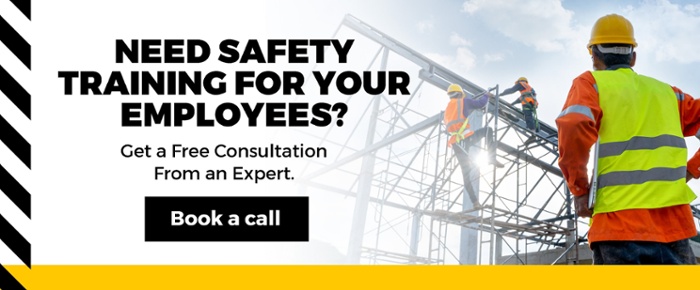Implementing a full safety program is difficult enough in an industry full of ever-changing regulations, responsibilities and dynamic work environments. With every major change, the possibility of accidents or infractions for non-compliance increases.
When a company reaches a point where they require extensive maintenance work, installation of new equipment or site expansion, hundreds of new contractors and construction equipment swoop onto the scene. With many different objectives needing completion during a turnaround, safety risks and non-compliance orders can quickly mount up. Bringing a third-party safety consultant on board can provide you with site representation, ensure regulations are followed and help you avoid these 5 mistakes during your shutdown or turnaround.
5 Safety Challenges During a Shutdown or Turnaround
Turnarounds, or shutdowns, are necessary to address aging equipment and infrastructure through upgrades or repairs. Industrial settings like the oil and gas industries, pipeline networks, chemical plants, and manufacturing facilities are common sites of turnaround projects.
These projects are carefully planned to minimize downtime, because the longer they take, the more costly they become. But the pressure to stick to a schedule isn’t the only worry during this process. Turnarounds present a unique set of safety risks for several reasons:
1. Many New Contractors Suddenly on Site.
An influx of new contractors and their crews mean a significant number of workers who are unfamiliar with the site layout. There may be equipment they have not encountered before, processes they have not seen and other contractors they have never worked with. The sheer number of bodies and machines on the site increase the risk of accidents due to logistical miscalculations and other miscommunications.
2. Different Safety Cultures Between Contractors.
Safety policies, procedures, training and safety culture are not the same thing, and they vary widely from one contractor to the next. Conflicts can arise when different cultures collide, especially when teams must work together on various projects, and this type of conflict resolution can be difficult.
3. New Machinery, Potential Collisions, and Accidents.
Any time new machinery is brought in, a host of new safety hazards crop up. Whether it is hand trucks and other equipment, updated industrial equipment or machinery being repaired, the likelihood of struck-by, electrocution, collisions and OSHA violations of improperly trained workers rises significantly.
4. Hazardous Material Storage and Toxic Exposures.
Not all contractors work with the same materials on a routine basis, and there is a real danger that hazardous materials can be left in areas where they become a threat to worker safety. Gas cylinders with open regulators and other flammable gases/liquids can ignite with disastrous results. Toxic fumes, hazards such as asbestos or lead, and other similar materials must have appropriate remediation and PPE for those working with or near the substances in question. Ensuring you follow OSHA's process safety management (PSM) standard for hazardous materials is critical.
5. Turnaround Fatigue and Stress.
The pressure of completing a turnaround on time and under budget can be exhausting for both the workers and internal safety teams. As fatigue sets in, workers may neglect key safety requirements and increase risks to themselves and those around them. Without enough eyes and ears, workers can easily become overwhelmed by the scope of the turnaround and miss critical safety components or unsafe work practices.
How to Avoid Making Mistakes
The best way to avoid these five mistakes is to hire a professional and experienced safety consultant to be your eyes and ears in the field.
Third party safety professionals help ensure that safety rules are being followed correctly.
From making sure permits are completed accurately, to conducting pre-job safety meetings that affirm workers are carrying out their daily job safety analysis of hazard identification, equipment checks, and work plans, safety consultants cement a safety culture and ensure due diligence.
Observation, Coaching, and Inspections.
Safety consultants can lead various teams under a set of unified expectations when it comes to safety. They can not only ensure proper procedures are followed, but they can also reinforce safety as an expectation, not an option.
24-Hour Support.
Ensuring a safety consultant is on site for every shift reinforces that safety is a priority for every contractor and job. Consultants can adjust safety plans and address specific concerns quickly and efficiently, keeping the project running smoothly and safely at any time of day.
Related Content: Safety Training: What it's Like Working with SafetyPro
Put Safety First During a Shutdown or Turnaround
You can’t depend on luck to keep your workplace safe during a turnaround or shutdown. If there aren’t extra ears and eyes on the ground to recognize deficiencies and correct unsafe conditions, risks increase. A safety consultant with experience in your industry can advise and coach you through the process. By keeping safety at the forefront, you will avoid lost time due to injury and accident, improve productivity, and keep your turnaround on track with efficient work and timely completion.


















